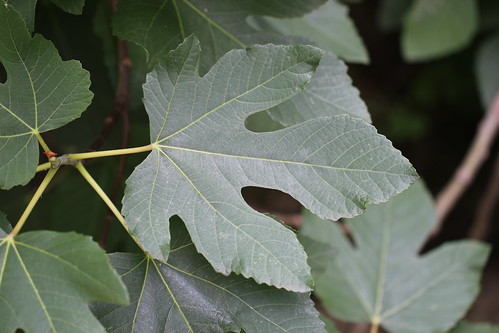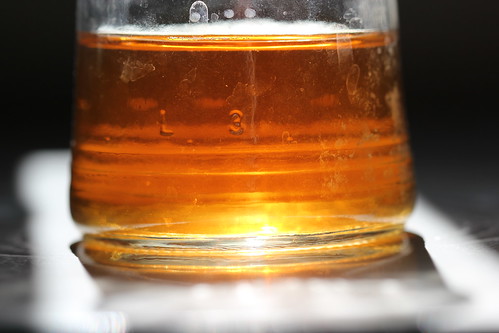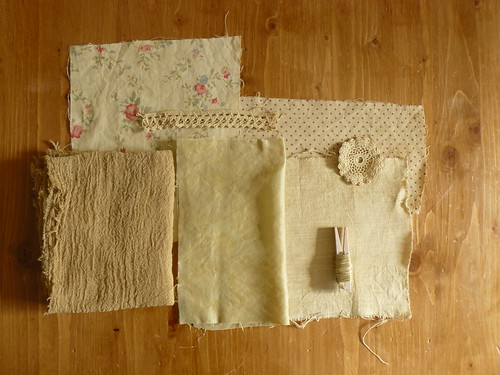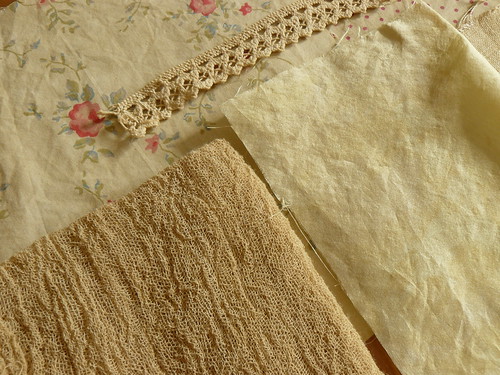ficus carica
That's the binominal name of the common fig. ("figue" in French for the fruit, "figuier" for the tree itself)
Beware if you pick fig's leaves, the sap of the fig's green parts is irritant for human skin.
The Common Fig is widely known for its edible fruit & can be harvested up to four times per year. Thousands of cultivars, most named, have been developed or come into existence as human migration brought the fig to many places outside its natural range. It has been an important food crop for thousands of years, and was also thought to be highly beneficial in the diet.
The edible fig is one of the first plants that was cultivated by humans. Nine subfossil figs of a parthenocarpic type dating to about 9400–9200 BC were found in the early Neolithic village Gilgal I (in the Jordan Valley, 13 km north of Jericho).
Turkey was the top fig-producer (280,000 tonnes), followed by Egypt (170,000 tonnes) and other Mediterranean countries.
(source : wikipedia)
We used the leaves only, and hot dyed. (not solar dyed, I mean) All fibers were premordanted with potassium carbonate, and then mordanted with alum, except the silks that I didn't mordant, this time.
Given the size of the leaves, we didn't need to collect a lot. And given the amount of leaves of a single fig tree, it's really interesting to dye with it if it grows abundantly where you live (like it is a bit the case here) ! And believe me, as much as I don't enjoy that much eating figs themselves, the fragrance that filled the whole apartment when they were in the pot (and even the dye bath itself, afterwards), was such a delight that you might even want to do it for the fragrance only ! It had a heavenly scent of summers past ... very hard to describe, but impossible to forget ! (always remember to use pots that you won't use for food, but specifically for dyeing !)
Wasn't the dye bath gorgeous in itself ?! The golden yellow was so strong & smelled so good !
Here are the results ... of course yellow ! (what would you expect ?! specially from leaves ?) Of course now I must have achieved a dozen tones of yellows, since it is the easiest color to achieve in naturally dyeing, and as much as I'd love to achieve other colors (or surprising ones like it has already been in the past), I'm trying to satisfy myself with what (local) Nature gives me. Even if I've been dyeing for two years now, I feel like I'm only at my baby steps ... still and always experimenting, and that's really the fun part of it.





J'ai également testé les feuilles de figuier (sur une jeune pousse). Je n'ai obtenu qu'un jaune très pâle sur le coton et plus vert sur la soie. Mais le rendu est effectivement très joli.
ReplyDeleteGreat results never the less and you cant have too many yellows in life!
ReplyDeleteAwesome! I've been growing figs for some time and didn't know what kind of color i'd get if i tried to dye, now I know lol ^_^ thank you for sharing, I'll have to give it a try.
ReplyDeleteHi! I am a fig (growing) enthusiast, and was fascinted by your post. Someone on our fig list sent the link. I am curious how color-fast the fig dye is. I love figs, love yellow and MUST give this a try!
ReplyDeleteC.J.
hi ! (and sorry for the late reply)
DeleteFact is I have not tested color fastness, sorry about that.